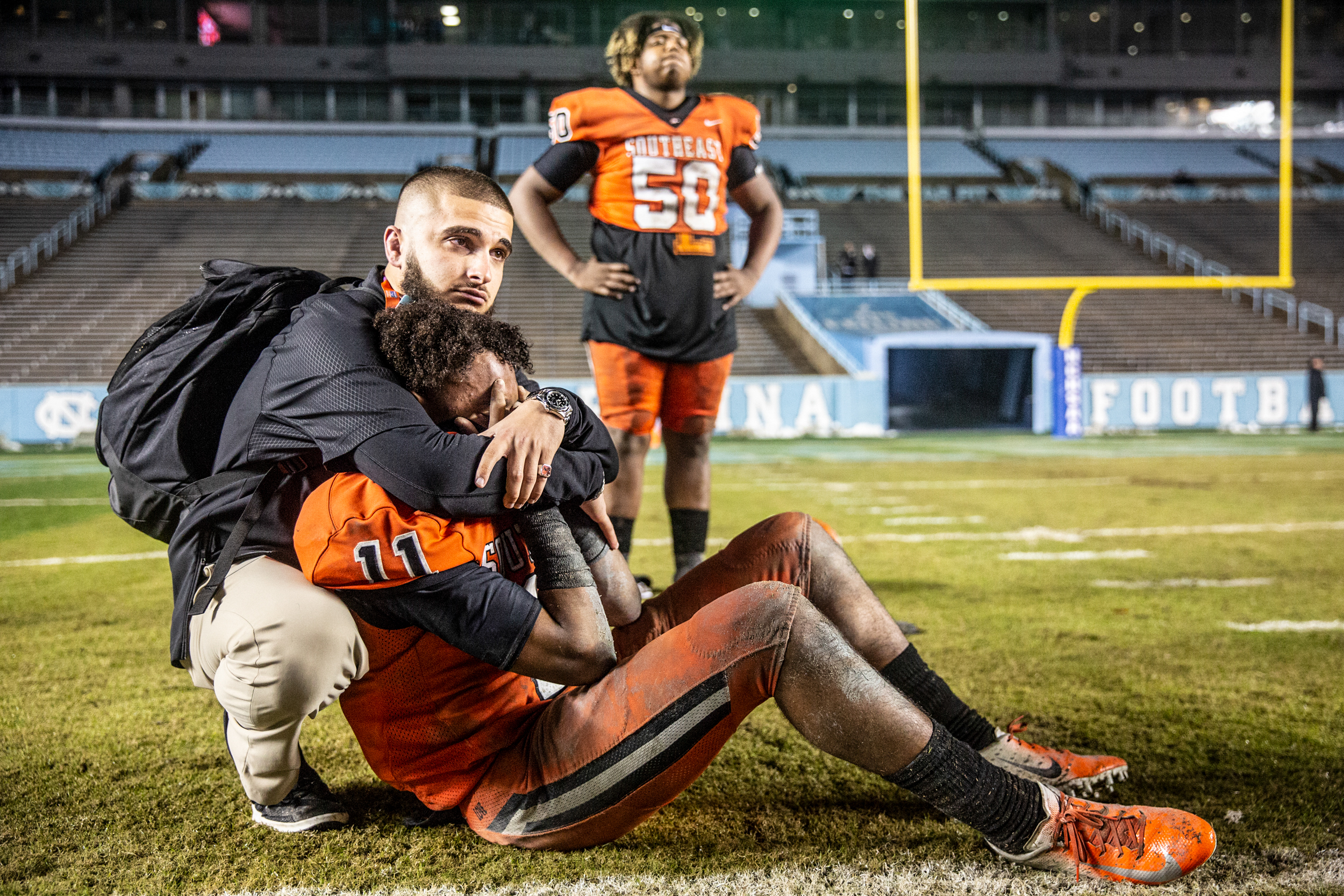“I had no excuse and I wanted to make her proud,” says North Carolina photojournalist Khadejeh Nikouyeh. Referencing the touching moment she remembered her late mother and registered for a college photojournalism program, she remembers the sacrifices her parents made for her. The fine art photography program she signed up for five years ago didn’t fit well with her. A handful of jobs filled her life until she decided to get back to college to honor her mother’s desire. That was probably the best decision she had made in her life. An opportunity to shoot a professional high school football game gave her a first taste of sporting action from the sidelines. But it’s the emotion and drama off the field that she loves photographing the most.
View this article with minimal banner ads in our app for iOS, iPad, and Android. Get no banner ads for $24.99/year.
Sticking to your dreams isn’t always easy. More often than not, life throws unexpected hurdles in our pathway. Some of us clear them quickly; others take longer to get past them. And many stumble their way through. But it’s those who decide to stop when they see hurdles who very rarely achieve their goals. Khadejeh made up her mind to excel in the field of photography she was most passionate about. It may have taken her longer than she’d have liked, but she took the proper steps toward reaching success. Seeing her portfolio, I have no doubts she’s someone to be inspired by in the sports photography genre.
The Essential Gear Used by Khadejeh Nikouyeh
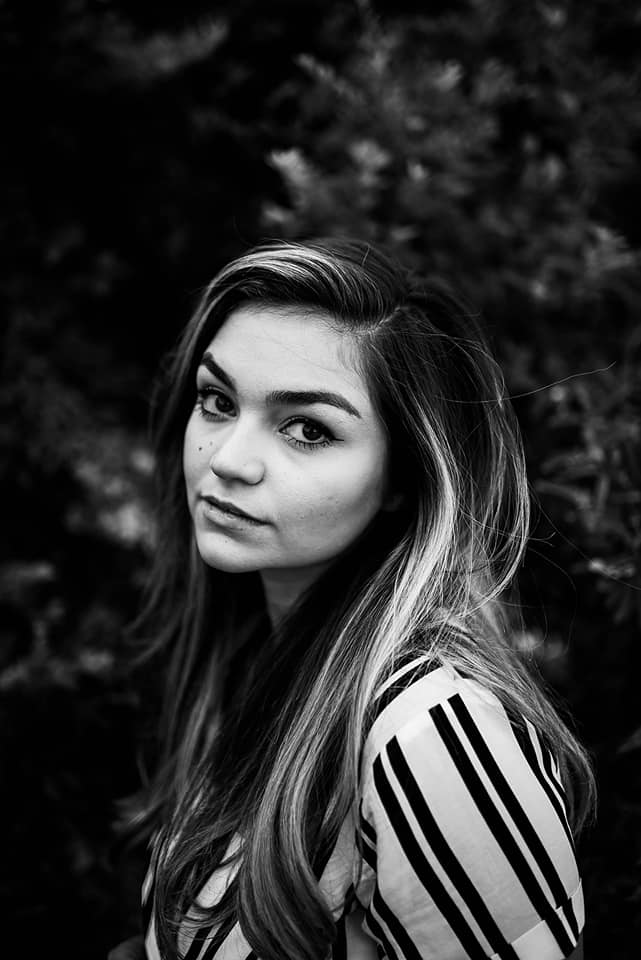
Khadejeh told us:
- Canon R5 x 2
- 24-70mm f2.8 Canon RF Lens
- 70-200 f2.8 RF lens
- 400mm f2.8 RF lens
- Canon 300 f2.8 EF lens
When I started at the Charlotte Observer they purchased a new kit of gear for me. It’s all company owned but it lives with me as long as I’m employed with them. Even after almost four years of working at newspapers it’s still amazing to me that I get to use gear that I thought I’d only ever get to dream about.
The Phoblographer: Hello Khadejeh. Please tell us about yourself and how you found your way to photography.
Khadejeh Nikouyeh: As long as I can remember, anytime someone had a camera out, I either wanted to take a photo or be in a photo. My parents used to buy me disposable film cameras for every holiday. I would keep shooting even after the film was used up. I never really cared about the photographs being developed; I was just happy making them.
I got my first camera when I was 14; my parents saved for months to buy me a $200 point and shoot. Even though we didn’t have much, my parents always found a way to fuel any passion I had.
Initially, I went to UNC Greensboro for fine art photography, and that didn’t feel right to me. I knew I wanted to be a photographer; I just didn’t believe I could make a living making photos of moments, people, and stories. While I was there, I took a Documentary Photography class with a section on photojournalism. In that class, everything felt right. It helped me realize that I wanted to be a photojournalist. I just didn’t believe in myself. At the time, it felt like a pipe dream.
I eventually dropped out of school at UNCG and worked as a barista and second-shot weddings here and there. Basically, I had given up on being a photojournalist. It wasn’t until my mom passed away five years ago that I decided I wanted to go back to school. One of the last things she ever said to me was, “You have all of my best qualities, and you’re everything I wish I could’ve been.”
She had some health issues that held her back from a lot of things she wanted to do in life. I had no excuse and I wanted to make her proud. So, one night, I sat on the edge of my bed and filled out the application for the Randolph Community College photo program in Asheboro, N.C., – on my phone.
A couple of weeks later, I came to take a tour of the photo department. RCC felt right. It was home before I ever stepped foot into a classroom.
Before I declared my major as photojournalism, I was out making photos wherever I could. Any event that sounded remotely visual, I was there. Once I got into my major, time flew by. I ate, slept, and breathed photojournalism. I broke up with my boyfriend at the time because I wanted all of my focus to be on cultivating my craft and building my portfolio. I knew there would be other students coming out of four-year photojournalism programs with a more robust portfolio simply because they had more time to work on it, and I wanted to be able to compete with their body of work. Thankfully, RCC sets students up for success by making internships an integral part of the program. After a semester and a half, I was out on an internship at the Charlotte Observer; one of my first assignments was the NCAA Championship.
My second internship was at the Greensboro News & Record in North Carolina. On the last day of my internship, I was offered a full-time position as a staff photographer. I was at the News & Record until February 2021, when I was offered a staff photographer position with the Charlotte Observer.
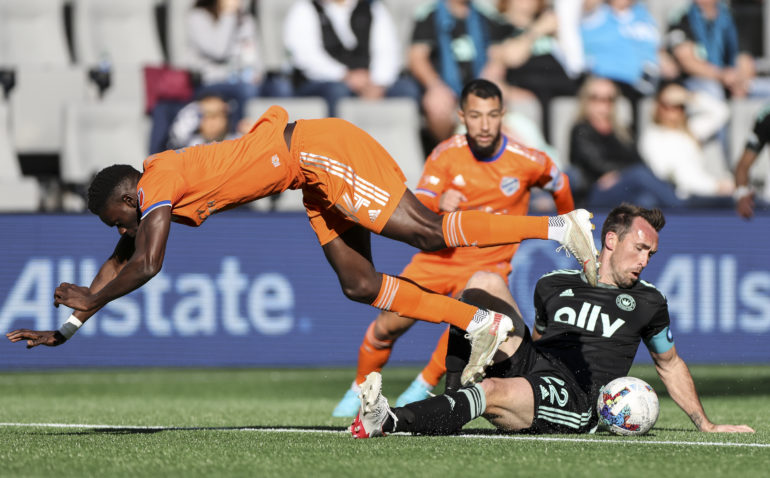
The Phoblographer: Was there a moment when you realized you wanted to specialize in sports photography?
Khadejeh Nikouyeh: When I went back to school at Randolph Community College for photojournalism, photographing sports didn’t really cross my mind. I have never been interested in playing or watching sports. I was just an artsy kid. I was much more interested in covering social issues and stories in photojournalism.
It wasn’t until my first Friday night high school football game that I was interested in covering sports. There’s so much more than the action on the field. There are a lot of beautiful slices of life that the crowd in the stands doesn’t see. Like the cheerleaders huddled behind the bleachers putting finishing touches on their hair and makeup. The intense locker room talks before the game and at half-time. A young man starting to tear up on the sidelines when he realizes his team won’t make it to the state championships. I realized there is just as much of a story in sports as there is anything else I cover at the newspaper. I definitely enjoy shooting sports features more than action.
Since I’m not attached to any teams or sports, I see the game a lot differently than most sports photographers. I’m able to be completely objective. I’ve never been upset if the team I’m covering wins or loses. I just carry on shooting dejection or jubilation; I file my photos and go home. I only know enough about the game to know where to be and what player to focus on.
It’s funny; I often get asked what I think about certain players by friends in fantasy leagues. I always tell them I don’t actually have a clue what’s going on half the time. I just make photos.
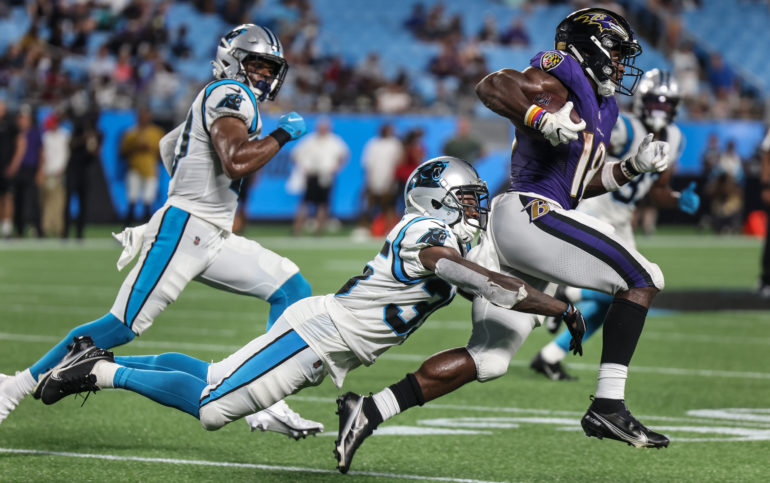
The Phoblographer: What camera gear do you use for your sports work?
Khadejeh Nikouyeh: Usually, when I get to a game, I’ll shoot pre-game and fan photos with my 24-70mm and 70-200mm. Once the game starts, I use the 70-200mm and 400mm for pretty much every sport except for basketball. For basketball, I use the 70-200mm for everything at the net and a 300mm for the other end of the court. When I photograph the Hornets, I usually don’t bother with the 300mm. NBA players are much faster, so it’s tough to switch cameras. I don’t wanna miss any dunks!
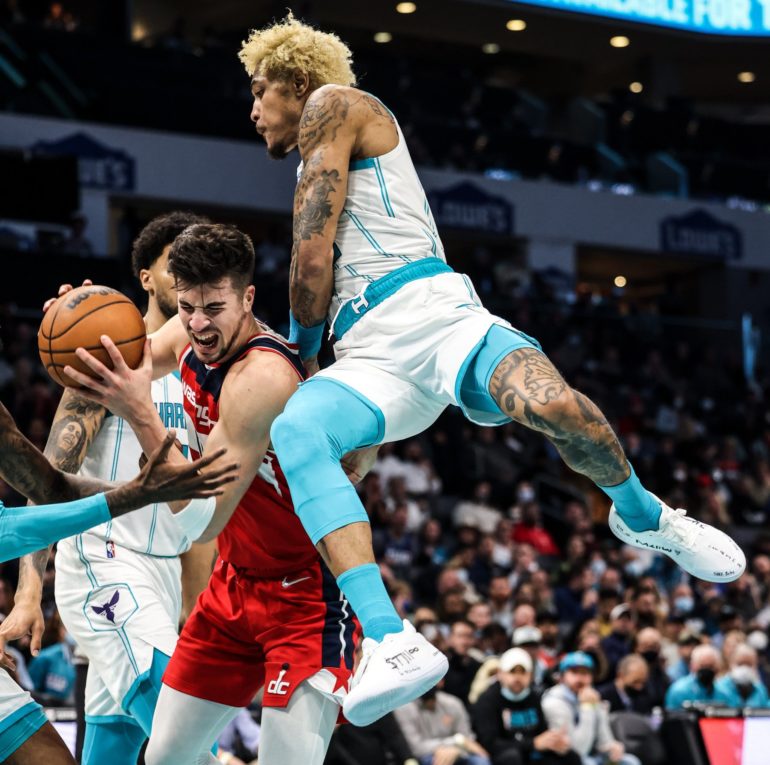
I currently only have two camera bodies, but when I had three at the News & Record, I would usually carry all three with the 24-70mm, 70-200mm, and a 400mm. The shorter cameras stay on my shoulders, and my 400mm would be on a monopod.
Most of the game, I’ll shoot with the 400mm until the action gets too close, then I’ll switch to the 70-200mm. This is usually when I’m in the end zone at a football game. With soccer, it’s tough to decide when to switch cameras because one second they could be right in front of you, and the next they’re on the other side of the field.
Within the last two minutes of most games, I switch out my 400mm for my 24-70mm. Especially if it’s a close or important game and there’s going to be good jubilation or dejection, I have to move fast and get close; I don’t want other photographers in my frame.
I have really enjoyed using the Canon R5 for sports; at 20 frames per second, it’s almost tough to miss anything. I’m excited to cover golf with a mirrorless camera. Without a silent shutter, you can’t shoot while the golfer is lining up a putt or during their backswing, because the sound of the shutter is distracting, and you’ll either get kicked out or yelled at by the caddy.
The RF 400mm is a dream as well. Before it was available, I was using the old 12-pound EF 400mm; it often missed focus and was breaking my back. The RF 400mm is tack sharp and weighs only six pounds, so I actually often handhold it. It’s definitely been a game-changer for my sports action.
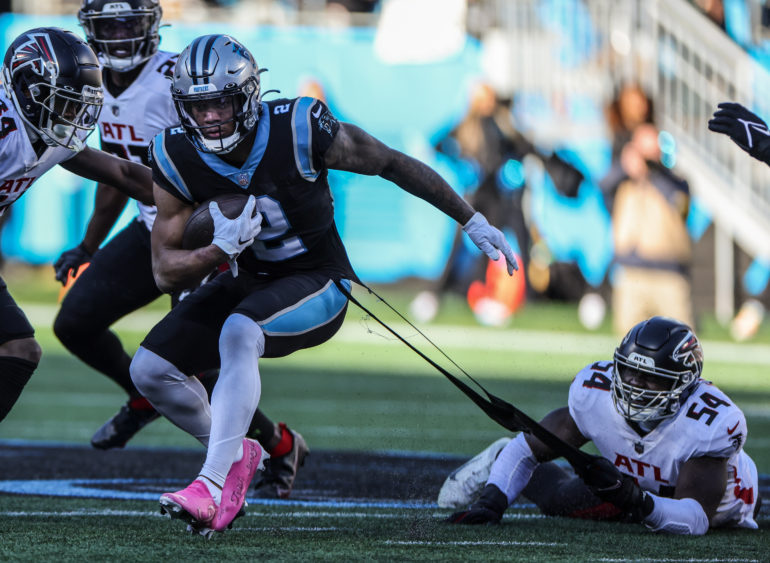
The Phoblographer: I’ve been there myself 15 years ago. The thrill of shooting your first professional sporting gig. Tell us what emotions you were feeling as you stepped onto the field that first time.
Khadejeh Nikouyeh: Like I said before, I was never really interested in sports. The first NFL game I photographed last year was my first ever experience at a professional sporting event ever. I don’t think I had ever watched an entire NFL game on TV before. I never even imagined I’d get to cover an NFL game, especially so early in my career. Same with the NBA, PGA, and MLS events I’ve covered.
I was pretty nervous because I’m a young female photographer, and there are a lot of people that don’t think I deserve to be where I’m at in my career. I just felt so proud of myself the first time I stepped foot onto the field. I remember for some reason thinking the field would be bigger than it was. I just kept looking up in the stands and wondering how I even got there. Once the game started, it felt like any other football game, except the players were a lot bigger and faster. I worked really hard that first pre-season game to make the best photos I could; I definitely felt like I had something to prove. Being there was a huge reminder that I really have the best job in the world
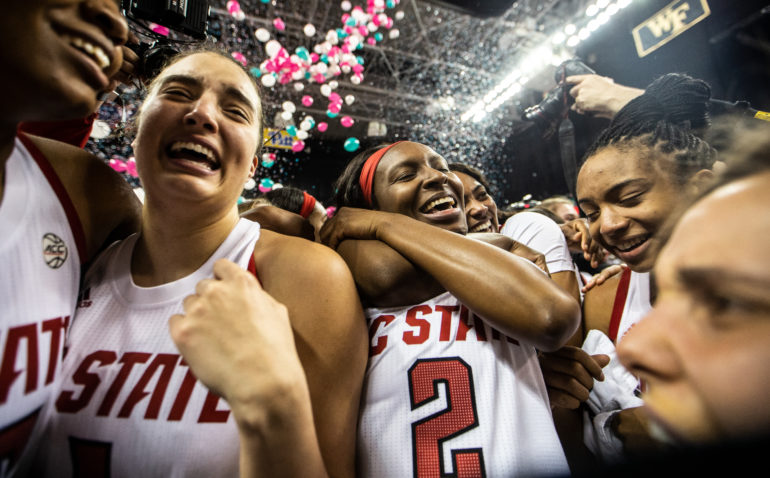
The Phoblographer: “Know the sport, but also know the athlete” is a mantra that’s helped me greatly as a sports photographer. Have you found this to be true during your career?
Khadejeh Nikouyeh: Absolutely! With the Panthers, I photographed their training camp, so I knew most of the players, and I was pretty in tune with what plays they might make before the season started. I usually would ask the other team’s photographer what receiver their quarterback throws the ball to most often and things like that.
When we first got Cam Newton back, I memorized his whole pre-game routine. I followed his every move because I knew everyone wanted to see him. Cam Newton is an absolute gift to photographers. I know he got on some peoples’ nerves, but he was a goldmine of nice images. He wasn’t afraid to show emotion, and he would get excited like a kid.
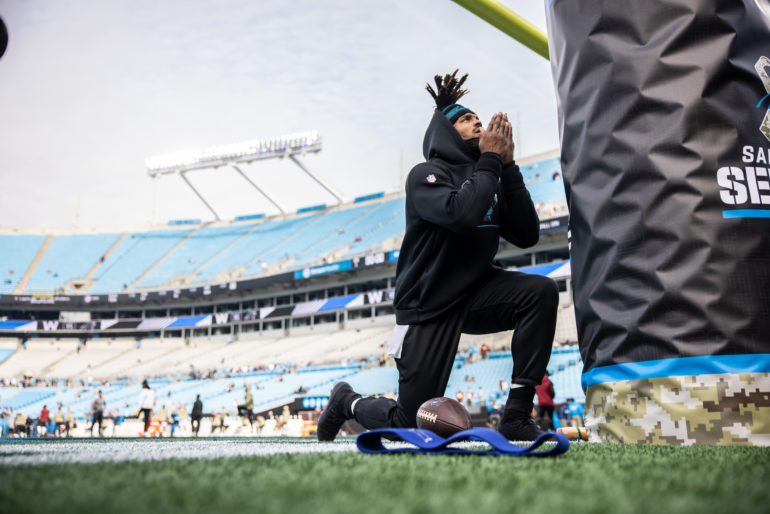
The Phoblographer: The action off the main sporting pitch – have you photographed some emotional moments there? Which were your most memorable?
Khadejeh Nikouyeh: The more emotional moments I’ve seen are in high school and college sports. Professional athletes are still getting paid at the end of the day, so it’s rare to see them get very emotional.
During my first high school football season, I followed one team from their first practice to their state championship game. I photographed all of their highs and lows along the way; it was a great feeling to know they trusted me to show some of these very vulnerable moments. Most 17-year-old boys don’t want a 6 column photo in the paper of them crying. They understood I wasn’t there to make fun of them; I was there to tell a story. When they lost the state championship game, the head coach was hugging each player, and I was following him and taking photos. He stopped and hugged me too and thanked me for being there with them. That was one of my favorite moments covering sports.
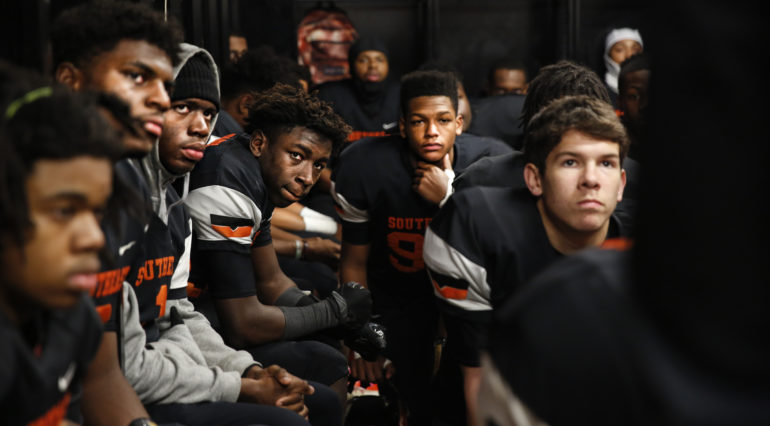
Another memorable moment was the men’s ACC tournament in Greensboro in 2020. It was the last tournament that hadn’t been canceled because of COVID. Before the day started, the commissioner met with the media, we all waited to hear that it was canceled. He came out and said the tournament was still on; there just wouldn’t be any fans. So, it was about 15 minutes or so till game time; the teams were even in the tunnels waiting to take the court, the cheerleaders were evening cheering. The stands were only occupied by the close family of the players. I thought surely this game isn’t actually going to happen. Towards the last couple of minutes before game time, the commissioner came out on the court holding a microphone with zero warning. Every reporter and photographer that was out on the court rushed to get as close as they could to cover what he was about to say. It was probably the most insane media scrum I’d ever been in. He announced the tournament was canceled and that Florida State won since they were the number 1 seed.
The impromptu trophy ceremony they had was just so strange. It was wild to see players holding a trophy with the most dejected looks on their faces. It was the day the pandemic felt real for me.
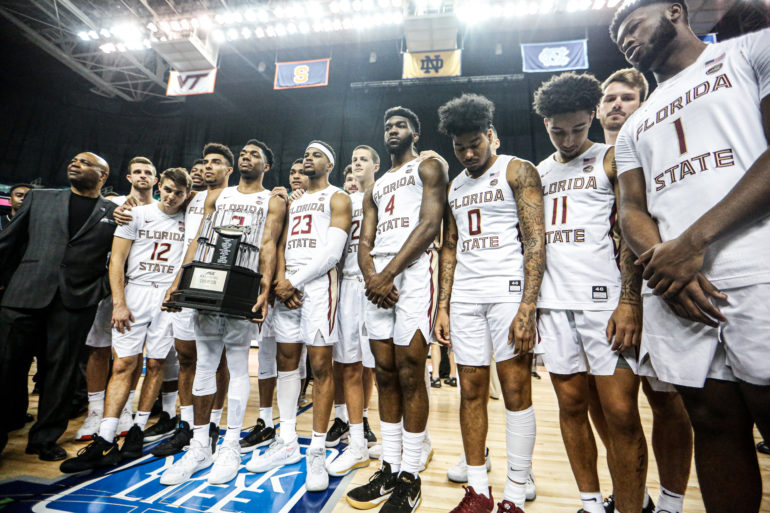
A recent memorable moment was covering Cam Newton’s first game back in Arizona. He made a touchdown the first time they put him in the game. Luckily I was in the right spot and photographed him screaming, “I’m back”.
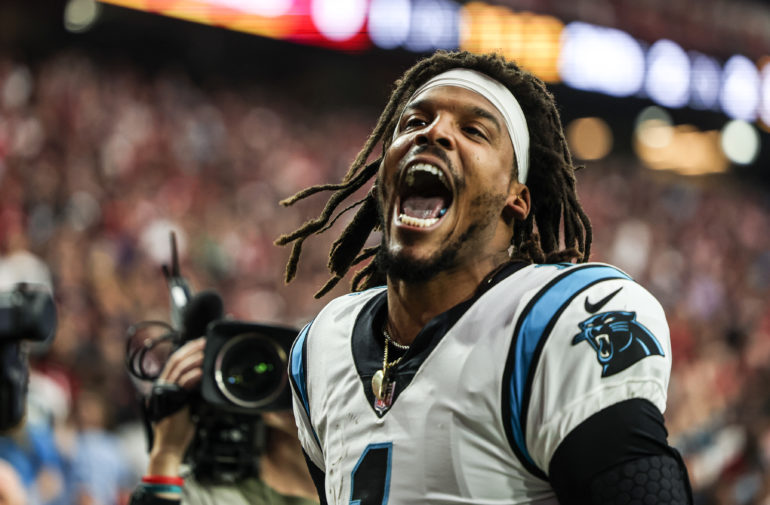
The Phoblographer: Being so close to the action, how do you fight the temptation to stop looking through the lens and become a spectator?
Khadejeh Nikouyeh: Well, that’s always been easy for me. I like photographing sports much more than watching them. I have no issues with remaining objective and just covering the game. I’m very competitive, so I’m always laser-focused on making the best photos I can.
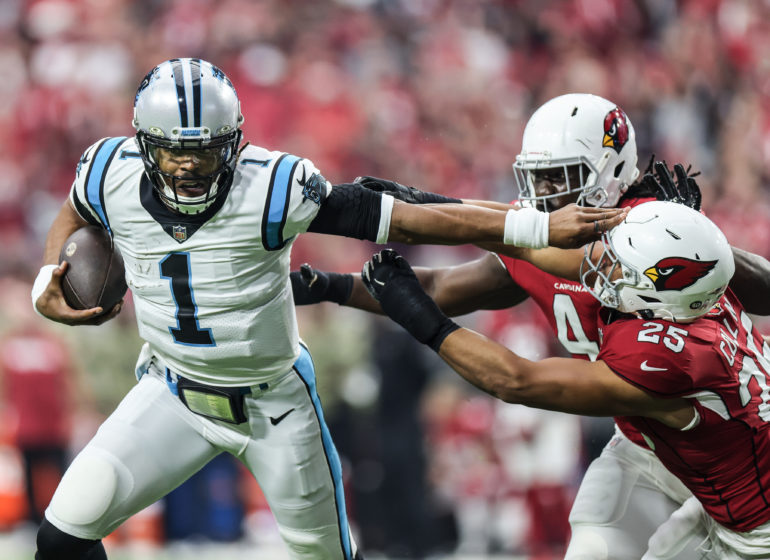
The Phoblographer: Sports photographers have some of the narrowest deadlines. What are some tactics you use to get your images to your editor as early as possible?
Khadejeh Nikouyeh: I usually have to file two to three photos after every quarter or half for most sports. The reporters are putting out stories throughout the game online, so they need photos to go with them.
For sports, I shoot in jpeg because it’s faster and takes up less space. As I shoot, I’ll tag my images in-camera, so I know which ones I want to file.
Photo Mechanic is the industry standard for culling, captioning, and filing images. Before the game, I add in basic caption information, so all I have to do to it is add the players’ names and what was happening in the image. I also set code replacements for the players, so I just need to type in their number, and their entire name pops up. Code replacements are a really great tool for working on deadlines, it’s fast, and there’s hardly any room for error.
Once I upload the files into Photo Mechanic, if I have time, I’ll run through them to see if there are any other images I should tag. I do very basic adjustments (brightness, contrast, white balance) just using the Camera Raw program for Photoshop, and then I resize and save them.
I can usually send up to five images in less than 10 minutes.
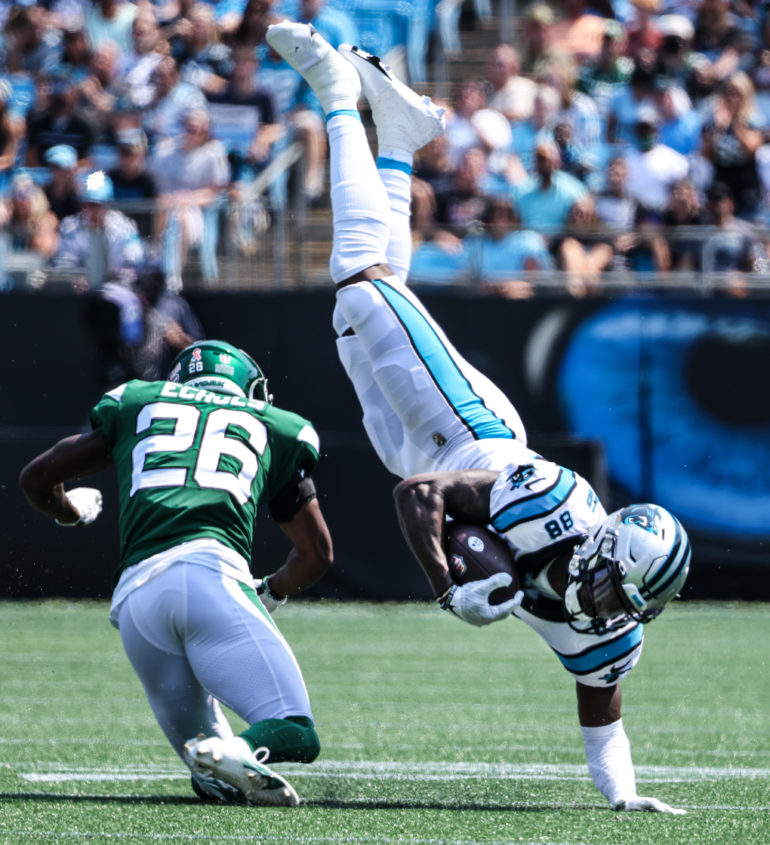
The Phoblographer: What are some other sports you’re hoping to photograph in the coming years? Any overseas events on your list too?
Khadejeh Nikouyeh: Nascar and Hockey are two sports I’d like to cover. Also, any of the winter snow sports.
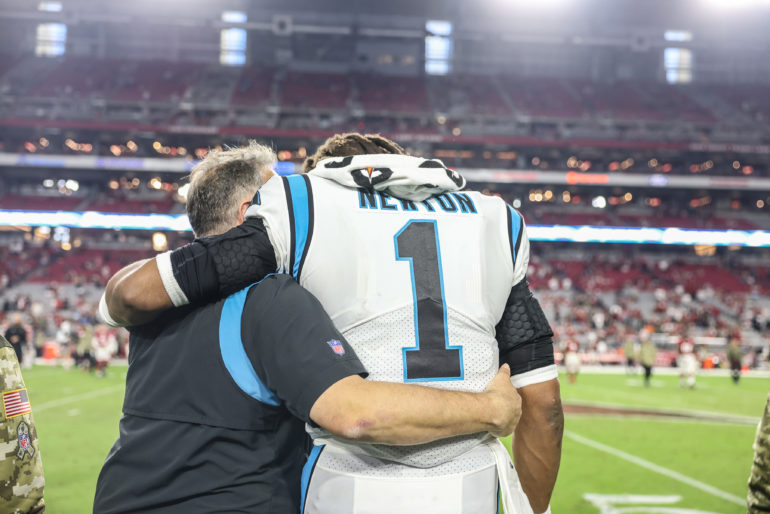
The Phoblographer: If you had to pick one, which image are you most proud of to date?
Khadejeh Nikouyeh: My favorite photo will probably always be the one of a high school football coach holding a crying player on the field after they lost the state championship game. Later on, the coach told me his mom bought five prints of it, and he had it as the background on his phone. It makes me so happy when the people in my images love them just as much as I do.
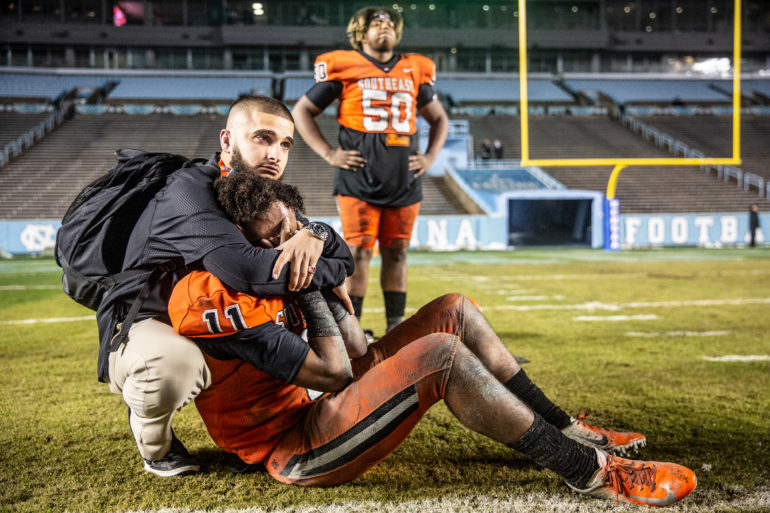
The Phoblographer: The ratio of women to men in sports photography is definitely far from even. What are some things sporting organizations could do to address this imbalance?
Khadejeh Nikouyeh: Sports photography is still a boy’s club. It’s up to photo editors to give opportunities and assignments to women instead of the same white men every time. It’s up to those organizations to also put women in those leadership and photo editing positions. When staff positions open up, there needs to be a much more diverse pool of candidates before a position is filled. It’s too often I see an organization hire someone new, but I never even saw a job posted. Male photographers in the photo workroom need to be better about making women feel welcome and safe. When male photographers aren’t able to take an assignment, they should consider recommending a female photographer for the job. It’s also important for established female photographers to mentor young women as well and help them navigate this field and also stand up for themselves.
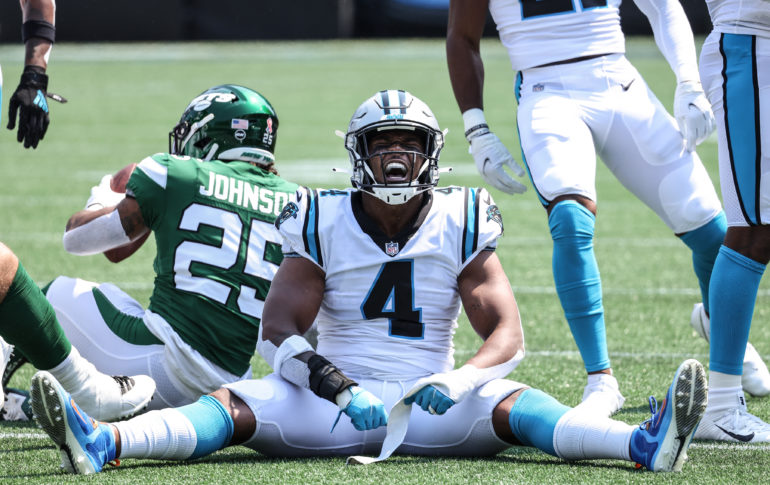
All images by Khadejeh Nikouyeh. Used with permission. Check out her website and her Instagram and Twitter pages to see more of her work.


